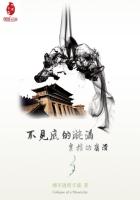When speaking of Zheng He’s voyages, there is a story commonly told among Chinese people. After Emperor Taizu died, the throne was passed to Zhu Yunwen (Ming Emperor Huidi), the grandson of Emperor Taizu. This greatly angered and disappointed the son of Emperor Taizu, the Prince of Yan, Zhu Di. Zhu Di sent troops southward from Beijing to attack the Capital Yingtian (present-day Nanjing). He took the throne from his nephew and made himself emperor. He became Emperor Chengzu. However, Emperor Huidi disappeared in the turmoil. Zhu Di was worried about this -worried that Emperor Huidi was hiding among the common people or might even have escaped abroad. Hence, he decided to send a fleet abroad to search for the missing Emperor. This is how Zheng He came to make his voyages. Of course, the true reason for Zheng He’s voyages was not finding Emperor Huidi at all. It is just an interesting folk legend.
China was strong and prosperous during the Yongle Period (1403-1424) of the Ming Dynasty (1368-1644). Emperor Chengzu Zhu Di sent the eunuch Zheng He (1371-1433) to lead a fleet to explore the oceans to the west of the South China Sea and the islands and lands there. The purpose of Zheng He’s voyages was to develop economic and cultural exchanges and to expand the influence of the Ming Dynasty.
In 1405, the fleet, commanded by 34-year-old Zheng He, set out from Liujiagang in Taicang in Jiangsu Province. It was the first of his great voyages.
Zheng He was born in what is now Yunnan Province, and was named Ma Sanbao. Both his grandfather and father were Muslims and had even made the pilgrimage to Mecca. Zheng He became a eunuch in the palace of the Prince of Yan and gradually gained the prince’s trust. The name Zheng He was given to him by Emperor Chengzu.
On his first voyage, Zheng He’s fleet of 62 ships carried well over 27,000 men, including sailors, soldiers, technical personnel, interpreters, doctors, etc., and large amounts of gold, precious stones, porcelain and silk. The largest ship had four layers of decks and was about 145 meters long, which was amazing for that time.
Whenever he landed in a new territory, Zheng He first handed over a letter from the Chinese Emperor to the king of that state and presented gifts to him to show their friendship. Many states, seeing the size of the fleet and the lack of hostility, received them with open arms.
On his first voyage, Zheng He reached among many other places Champa (in present-day south Vietnam), Java (present-day Indonesia), Polembang (present-day southeast Sumatra), Malacca, Calicut and Ceylon. In September of the third year of the voyage, the fleet returned to China, with envoys sent by the kings of the states which Zheng He had visited.
From 1405 to 1433, Zheng He made seven voyages in all, visiting over ten countries along the Indian Ocean. The voyages even took Zheng He to the eastern coast of Africa.
In 1433, on the way back on his last voyage, Zheng He died of illness in Calicut on the western bank of the Indian Ocean and was buried there.















